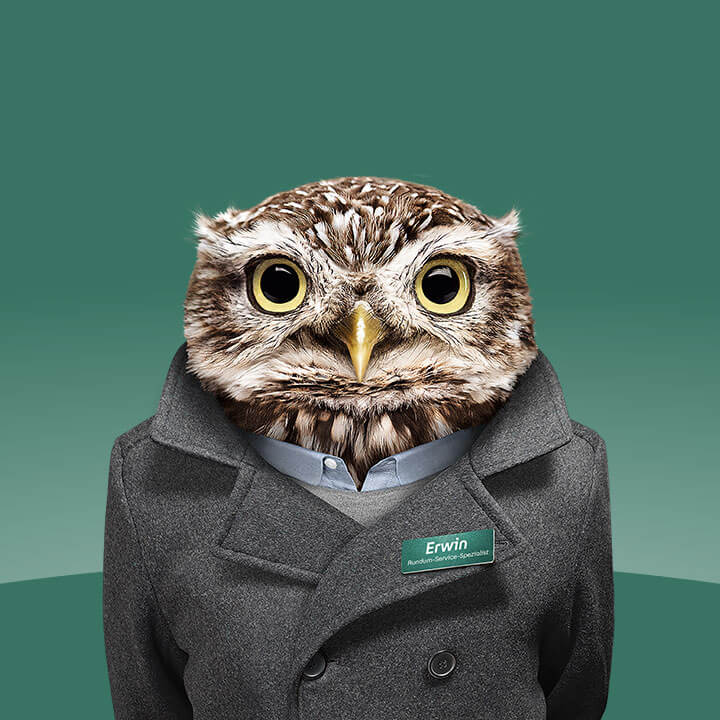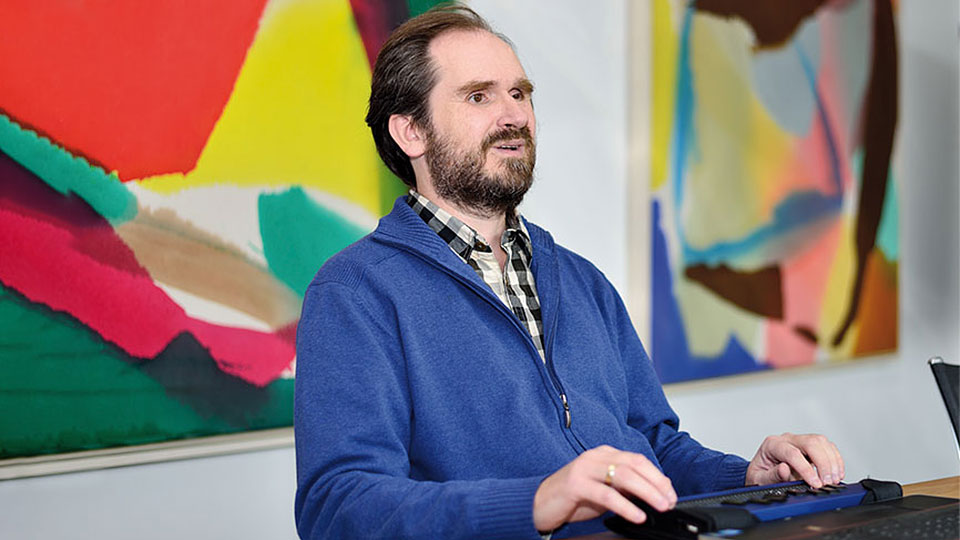Getting personal – Curtains up for Mario
My name is Mario and I’m blind. I don’t usually introduce myself that way. For the purpose of this article, however, it’s a fitting introduction. It’s going to help you understand me better, along with the passion I have for my work as an accessibility engineer.
When I was young, the opportunities to study and work were very limited for those of us who are visually impaired.
- Written documents existed only in paper form, which meant that we had to rely on a sighted reader for every book and every letter.
- The availability of freely accessible literature in Braille or in the form of audio books was extremely limited.
This lack of independence left us with very few career opportunities. People who were blind worked as basket weavers, massage therapists, and telephone operators.
The digital revolution paves the way for equal opportunities
My joy in having my first computer in 1990 is hard to put into words. Not long after, I started making my first independent connections in writing via e-mail, reading my first electronic books and articles, which I was able to find on the World Wide Web (WWW) and read on my own using my Braille display.
The past thirty years of digital revolution have ushered in tremendous advances for those of us with physical disabilities:
- People with motor disabilities control their environment independently to a large extent using smart home applications.
- Visually impaired persons enjoy the option of adjusting the font size and contrast on their PCs, smartphones, and tablets to accommodate their own needs.
- Thanks to so-called screen reader software, people who are blind have access to press, literature, communication, and navigation on modern mobile and desktop devices.
This, in turn, opened up a whole new world of employment for us blind persons. Today we work as office workers, lawyers, computer scientists...
In the last few years, there has been a nearly complete shift from desktop software to web applications. Since, in contrast to desktop software development, there aren’t any fully accessible libraries for the web, the effort we put into development is considerably higher. Now, not only is all the information of interest online, but the software is, too. The new magic formula is “cloud computing.” The end devices don’t need massive memory and speedy processors anymore, but they still have an incredible variety of applications running remotely somewhere in the world.
What exactly does the term “barrier-free” or “accessibility” mean?
Are you wondering what all of this has to do with accessibility, a term I mention in the title of this article?
An application or piece of content is considered accessible or barrier-free when people with impairments can interact with it independently and unhindered. To achieve this, both the browser or media player as well as the content or application it displays must comply with the international guidelines for accessibility – the Web Content Accessibility Guidelines (WCAG). I’ll summarize the key requirements here:
Device independence
There are several methods for navigating the content and operating the user interface. These include mouse, keyboard, on-screen keyboard, and voice input. Some categories of people with disabilities, such as blind users and certain users with motor impairments, are unable to use the mouse and instead use only their voice to control the computer.
The guidelines require that full operation is also supported using the keyboard.
Alternatives to sensory-dependent content
For instance, blind users are unable to see images, logos, and graphical links and buttons. People who are hearing impaired don’t hear the movie’s audio content. Consequently, there have to be other options for content that is exclusively acoustic or visual. The commonly perceived alternative is text. That said, there are also sensory-based options that are better suited for some situations. A lecture or presentation can be enhanced with a translation into a particular sign language, or an audio description for a film can be provided for visually impaired people on a separate channel, with narrators providing explanations only for the visual scenes during pauses in the dialogue.
My tasks as an accessibility engineer
Our core aspiration is to ensure that our software products are completely barrier-free and thus guarantee equal opportunities for people with disabilities.
Since January of 2012, I have been in charge of the following areas of work at Fabasoft:
- Co-designing the Fabasoft user interface (ARTS-UI) that is used in all of our cloud products. Thus, accessibility is considered as early as the design phase.
- Testing the accessibility of our products with each new release.
- Co-developing and testing our web offerings.
- Training our development and QA staff in the evaluation and programming of accessible applications and content.
- Supporting and supervising the engineering teams.
- Continuous in-house training, as web technologies, evaluation tools, assistive technology, and various accessibility guidelines are constantly evolving.
I am proud of the positive attitude demonstrated by the management and all throughout Fabasoft about the fact that accessibility is a necessary prerequisite and feature of our products. And about how we’ve adopted the motto “We really care for… accessibility” and are putting it into practice every day. This attitude has also yielded abundant results: As an example, our Fabasoft Cloud has been awarded the WACA Web Accessibility Certificate in silver.



